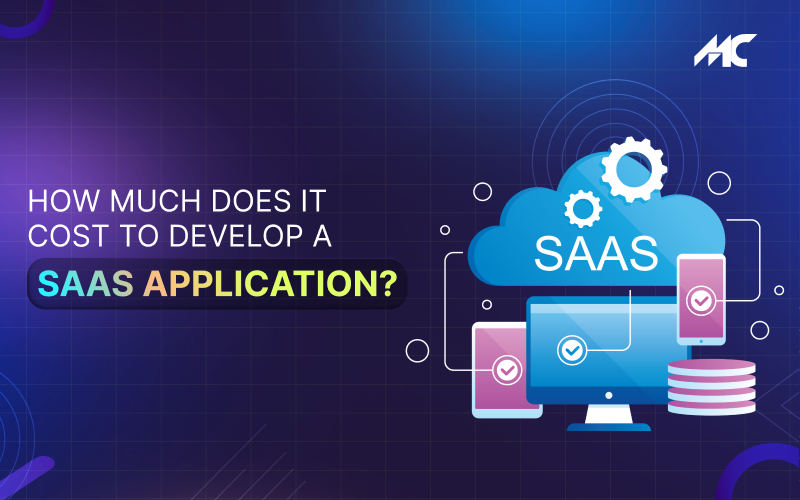Know How To Drive Business Solutions Through “Artificial Intelligence” & “Machine Learning”: A Feasibility Check!
In the current scenario, AI & ML, or say Artificial Intelligence and Machine Learning have turned out to be the most sensational as well as the contentious trends on the face of every industry & IT-based enterprises.
Especially in the case of MSME’s & startups, who’re supposed to make prudent financial decisions in their crucial-initial years and are still in a dilemma of whether or not to invest in these technologies. It is significantly a big factor to think about the right time to make transition knowing that there are some uncertainties with outcomes that may add “desired value” to the organization.
In this blog, we will analyze how feasible this transition is specifically for an enterprise and what are the challenges & current industrial trends on AI/ML. Long after remaining a subject of debate & a part of sci-fi movies, AI is finally beginning to deliver real value to the organizations.
According to the professionals at MIT, “AI will become a general-purpose technology that will power up the electricity & internal combustion engine and the next generation of economic growth.”
AI is an umbrella term for technologies that intend to resemble intelligent human behaviour. Every operating model within industry & its core business processes is getting transformed by some forms of Artificial Intelligence.
When we talk about Machine Learning, the shift from conceptual to concrete is already underway. As per the industrial predictions, the number of MSME’s or large enterprises that are either “exploring ML use-cases” or “implementing pilot projects on ML” are getting doubled every second year. The funding that goes into ML alone accounts for more than 60% of all AI-based investments.
- ML doesn’t require explicit programming to solve a task in hand.
- It involves the usage of “self-learning algorithms”, which progressively improves performance on a specific task—such as diagnosing disease, recognizing a cyber-security threat, predicting an IT systems outage, or detecting fraud when integrated with data.
A more familiar example is an image-based search used by Google.
While the popularity of these technologies is soaring, the confusion & hype can mask their real benefits. The majority of executives are not entirely clear about the “right- implementation area” for these technologies to make the most out of their investments.
Every organization needs to identify the use cases that will produce value for them especially in areas of business processes optimization, deviation/anomaly detection, and “predictive analytics” and its incorporation into business models. As per the survey reports by HBR analytics on the adoption of AI/ML,
- 48 % say that they’re exploring use-cases on these technologies
- 36% say that they’re currently in pilot or production stage
- 26% say that they’re actively evaluating AI/ML
- 21% that they’re currently testing the technology
- 3% say that they do not need making the transition to AI/ML
- Some Concrete Business Benefits of Implementing Artificial Intelligence/Machine Learning
- Artificial Intelligence/Machine Learning: Implementation Challenges
- Artificial Intelligence/Machine Learning: Implementations in a real-world scenario
- Artificial Intelligence/Machine Learning: How to start?
- Artificial Intelligence/Machine Learning: Bolsters the capabilities of a data centre
- Conclusion
Some Concrete Business Benefits of Implementing Artificial Intelligence/Machine Learning
The success of AI/ML-based system relies heavily on organizational leaders regardless of whether they are working on their learning curve. The leaders must have that clarity on where the technology must be best applied to obtain the real value out of it. AI/ML goes far beyond the simple automating processes.
As per HBR’s report, “Companies that deploy cognitive technologies primarily for displacing employees will see only short term productivity gains.” Both productivity & performance-related improvements will occur when humans and machines collaborate to work together.
The capability of AI/ML-systems to process high volumes of data will be quick to help & enable organizations to do the following:
-
Discovering anomalies/deviations
Deviation from past trends or even forecasted behaviours could easily be discovered using ML-powered systems.
For an example, IT security systems with ML capabilities can help to discover that which data patterns indicate real threats that must be addressed on a priority basis & presented among a bunch of other alerts that are mostly harmless.
-
Incorporating “predictive analytics” into business models
Historic and current data/behaviours could easily be analyzed by ML-powered systems. They are capable of predicting events and trends to inform a proactive response such as preventing adverse events or anticipating customer intent.
For instance, a retailer’s system could help singling-out a customer who mostly returns his purchases indicating a high likelihood of defection in future. This would help retailer do the damage control, by offering the customer an attractive order by selling with conditions or asking for more feedback.
-
Drawing meaningful inferences from data sets
“Network monitoring systems” with ML capability can ‘correlate events’ and ‘segment data’ that would help singling-out situations, which could affect network’s performance before an outage occurs.
“Without human effort, an AI/ML capability can’t be implemented in the most relevant operational areas, hence creating “no real tangible value” from it.”
Through some experiences from customers, Accenture has defined five key characteristics of processes that organizations typically want to improve upon
-
Flexibility
Teaming up the human workers with AI/ML-systems could help to customize products in real-time or quickly configure new product designs based on the changing parameters like performance requirements, material, cost, functionality, etc.
-
Speed
These systems can automate tasks & could execute them far more quickly than a human could do such as assessing a consumer credit or making on-the-spot decisions.
-
Scale
They can streamline tasks that would otherwise require a workforce to handle them.
-
Decision making
By producing insights, guidance, and tailored information at the exact moment this input is needed, AI/ML-systems can help organizations make more quality decisions.
-
Personalization
These systems can comb through the heaps of consumer data & could help in making inference about user preferences (Data Mining) that will further be used to create relevant and personal user experiences.
Some more benefits of Artificial Intelligence/Machine Learning, as cited by various executives (Deloitte survey, 2017)
- Enhancing the performance, features & functions of our product- 51%
- Optimizing internal business processes- 36%
- Freeing up workers to be more creative by automating tasks- 36%
- Facilitating workers in making better decisions- 35%
- Helping an organization create new products-32%
- Optimizing external processes like sales and marketing- 30%
- Helping businesses to target new markets- 25%
- Assistance to capture and apply scarce knowledge wherever needed- 25%
- Helping out to reduce headcount through automation- 22%
Artificial Intelligence/Machine Learning: Implementation Challenges
To harness maximum benefits out of AI/ML technologies, organizations need to overcome multiple challenges during its implementation.
A poor quality of data is unarguably the primary factor behind the downfall of AI/ML and other advanced analytics applications. This pitfall is more forbidding with ML than another type of analytics because there are two different scenarios for an error to surface:
- While data being used for training purposes.
- When data is accessed to make informed decisions.
The propriety of data must be kept at a priority. The data must be right/correct, properly labelled, de-duped, & so forth.
This is also important if one aims to incorporate the concept of ‘predictive modelling’ to its business.
However, some challenges reside on the human end. Some ML systems require highly skilled data scientists to program and train the system & yield insights. But the high demand for these sought-after professionals made it difficult to hire and retain them resulting in the severe obstruction to the organization’s transition to ML.
Artificial Intelligence/Machine Learning: Implementations in a real-world scenario
Some key functional areas where AI/ML-powered systems are generating impact:
Consumer servicing/ Consumer experience
A hospitality company that requires a centralized solution to monitor/surface server issues & improve network reliability must deploy ML. It could not only improve the reliability of its network for the benefit of its internal users but could also greatly improve upon its hotel guest’s experience by providing better Wi-Fi uptime i.e. a significant aspect of their stay.
Product/Service innovation
It’s meant for a large university that embarks on an ML and analytics initiative to manage & troubleshoot the operational efficiency of its IT networks. The university could also expand its use of ML to single-out the students who are at risk by using the data from its Learning Management System (LMS). This would help to make earlier interventions for struggling students & providing personalized feedbacks to their family members. Such systems would help the university in rapid improvement of its performance.
Internal IT operations for direct support to consumer-&-employee-facing functions
A global financial technology company (Fin-tech) helping businesses reduce risk alongside helping consumers manage their credit, identity, & personal info. By adopting ML, the company’s IT department could improve network service-level-agreements (SLA’s). In addition to this, it can get to the root cause of incidents more quickly. Better performance for internal users would also result in higher customer satisfaction.
Artificial Intelligence/Machine Learning: How to start?
Because of the hype and lofty speculation surrounding AI/ML, many organizations may feel unsure of their first step, i.e. How or from where to start? No matter, where an organization lies on the AI/ML maturity curve, four considerations will always let you ensure that you’re on a path to success:
“It’s better to start small”
Process automation projects (such as automatically updating consumer’s file with an address change) are good choices to get started because they are least expensive & easiest to implement as opposed to more advanced cognitive applications that use algorithms to analyze and determine a bulk of data.
According to analysts, alike the first target could be an unyielding internal business process [such as employee recruitment], or it could be a “previously intractable/unmanageable problem” that can now be managed using AI such as identifying the spread of drug reactions across a patient population. It’s essential to work with stakeholders to discover exactly where AI would be most effective.
“Humans won’t be overshadowed by machines”
AI and related tools come with baggage: – fear of job displacement and mistrust in AI/ML generated insights.
“A consensus emerging with AI will complement rather than replace humans”.
Unarguably, humans will retain the most important role in asking the questions for the machines to answer.
“Computers are the devices for answering questions, not for posing them. That means entrepreneurs, enterprises, innovators, scientists, engineers, and other people who figure out what problem or opportunity to tackle next, or what new territory to explore will remain important. Much of the undesired work has already been removed to computers to free people up for more challenging tasks.
“Being clear about the skills required”
To meet the specific needs of an organization, AI/ML capabilities should be customizable & tools and technologies must be usable by a wide range of professionals & not just limited to data scientists. The demand & salary expectations are skyrocketing for these professionals.
Not all organizations will be in a position to hire them. And hence, a new class of AI/ML tools is making its mark, which can be used by a so-called citizen data scientist who does not have specialized training. This will enable organizations to get the most out of their employees without making a heavy investment in skills.
Artificial Intelligence/Machine Learning: Bolsters the capabilities of a data centre
For the success of AI/ML systems, a robust IT infrastructure is a must. AI should be considered at the top of a ‘pyramid of needs’. At the bottom of the pyramid is data collection and the next level up is ensuring a steady data flow via reliable networks, storage, and technology infrastructure. Only when these elements are placed in the right manner, organizations move up the pyramid to data cleansing/preparation, analytics, simple ML algorithms, and finally a full-fledged AI.
Conclusion
Already, IT operations are being optimized through the use of ML, including anomaly/threat detection and systems/network monitoring/self-healing. The technology would lose a lot of value if users won’t get data in real-time. While the AI/ML-enabled future doesn’t portray a clear picture yet, these technologies are here to stay.
The most agile organizations will experiment with AI & ML and learn as they go. As artificial intelligence and its progeny take hold, staying on the sidelines will no longer be an option. Concluding it with a fact stating that over the next decade, AI won’t replace managers, but managers who use AI will replace those who don’t.”
-

 Mobilecoderz Awarded as India’s Best iPhone App Development Company by Clutch
Mobilecoderz Awarded as India’s Best iPhone App Development Company by Clutch -

 How Much Does It Cost to Develop a SaaS Application?
How Much Does It Cost to Develop a SaaS Application? -

 Mobilecoderz recognized as the Top App Development Company in Saudi Arabia by GoodFirms
Mobilecoderz recognized as the Top App Development Company in Saudi Arabia by GoodFirms








